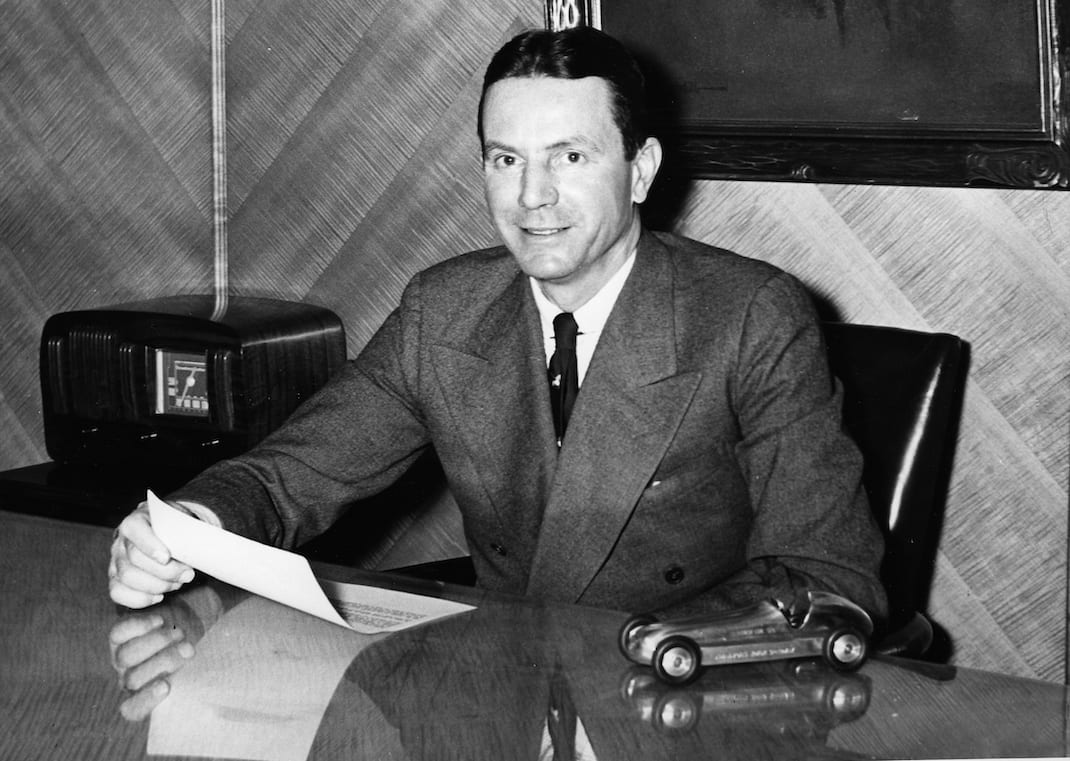The desperate race to prepare the track for a 1946 500 began. With the track scheduled to open for practice on May 1, a year’s worth of labor had to be accomplished in five months.
Besides the enormous cleanup task, seven wooden grandstands, the garages and the Pagoda needed extensive repairs.
Jack Fortner, superintendent of grounds, hired 150 carpenters for the effort. But they were still lagging behind an impossible schedule when a strike at the nearby GM Allison plant provided workers from that large manpower pool. Shaw recalled, “Anyone who knew the difference between a hammer and a saw was put to work.”

In the meantime, Hulman faced a desperate situation with Grandstand G and the Paddock along the frontstretch. They were beyond salvaging. Because of the nation’s war-depleted industries, however, there wasn’t enough of the necessary steel available anywhere in the country to replace them. Then, contractor Harry Tousley offered a solution. Design the stands around what steel was available.
Hulman immediately approved that plan. Still, by the time materials were located and new designs drawn, it was mid-January before work got underway. Finishing touches were still being added on race morning.
When Hulman first discussed purchasing the speedway, he’d told his team, “I don’t care whether or not I make any money out of it. The speedway has always been part of Indiana, as the Derby is part of Kentucky. The 500 should be continued. But I don’t want something which will require additional capital to keep it going. I’d like to be sure of sufficient income so we could make improvements each year and build the speedway into something everyone could really be proud of.”
With $300,000 already spent on renovations, that thinking required the 500 to be successful from the beginning. As late as race morning, Hulman was concerned about attendance.
But the race exceeded all expectations. Fans poured in. Roads were gridlocked for miles around the track as people fought to be part of the first 500 since 1941. In the days following the race, Hulman received a thousand letters and telegrams from people who missed the start of the race or couldn’t get into the track at all.
Hulman addressed those issues before the next 500 and was good to his word about continued improvement. He poured a steady stream of money into the facility. The old Pagoda was replaced with a steel and glass structure. The track was completely paved, leaving only a yard of bricks at the start/finish line.
The wooden grandstands were replaced with steel structures. Fan amenities from restrooms to a museum were a priority. And the 500 increasingly became the richest, best attended and most famous race in the world.
